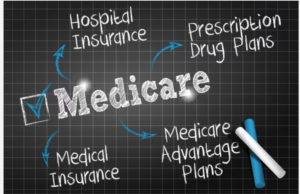
Eighty years ago today about midnight my father jumped out of a plane over Normandy, France. He was the first man out of the second plane that began the invasion that would liberate France and the civilized world. As a Captain in the 101StAirborne Division, he was one of about 20,000 paratroopers to make that jump on that historic night.
According to Barrett Tillman’s D-Day Encyclopedia, The Normandy Invasion consisted of 5,333 Allied ships and landing craft embarking nearly 175,000 men. The British and Canadians put 75,215 troops ashore, and the Americans 57,500, for a total of 132,715, of whom about 3,400 were killed or missing, in contrast to some estimates of ten thousand. The foregoing figures exclude approximately 20,000 Allied airborne troopers.
The Allied forces for Operation Overlord comprised twenty-three infantry divisions (thirteen U.S., eight British, two Canadian); twelve armored (five U.S., four British, one each Canadian, French, and Polish); and four airborne (two each U.S. and British)—for a total of twenty American divisions, fourteen British, three Canadian, and one each French and Polish. However, the assault forces on 6 June involved two U.S., two British, and one Canadian division.
Air assets included 3,958 heavy bombers (3,455 operational), 1,234 medium and light bombers (989 operational), and 4,709 fighters (3,824 operational), for 9,901 total and 8,268 operational. Allowing for aircrews, 7,774 U.S. and British Commonwealth planes were available for operations on 6 June, but these figures do not include transports and gliders.
Of the 850,000 German troops awaiting the invasion, many were Eastern European conscripts; there were even some Koreans. There were sixty infantry divisions in France and ten panzer divisions, possessing 1,552 tanks, but not all were combat ready. In Normandy itself the Germans had deployed eighty thousand troops, but only one panzer division.
I had the privilege of accompanying my father when he revisited Normandy on the 50th anniversary of D-Day. It was a solemn event as we walked together the grounds of the Normandy American Cemetery at Omaha Beach and viewed the thousands of white gravestones of the men who died there on that day.

But it was a joyful day as well as my father recounted the events of the first twenty-four hours when he landed in a tree and lost his “clicker.” In the pitch-darkness of that night, he managed to pull on the shrouds of his parachute until he was able to feel the tops of bushes with his feet and then jump to the ground. He soon connected with his fellow paratroopers and together they achieved their first objective: taking out a pill-box (large German artillery gun) that threatened the beaches.
We were able to find that concrete pill-box on our return visit, still sticking up like a swollen thumb in the field of a cow pasture. Then we found the nearby farm house where my father set up a base of operations with the cooperation of the farmer and his family. We even discovered the farmer’s daughter, a girl of fifteen during the war, was still living there! The reunion with my father transcended their mutual lack of a common language.
As I reflect on that day 30 years ago, and the events of 80 years ago, I have a profound sense of appreciation in my heart for my father – and for the thousands of men and women who gave their lives that day that we might be free. America is the greatest country in the world and has done more to promote the freedom of other countries in the world than any other country in history. It’s too bad that so many young Americans don’t know this.
Today, June 6th, is a day that all Americans should be proud to say, “I am an American.”


